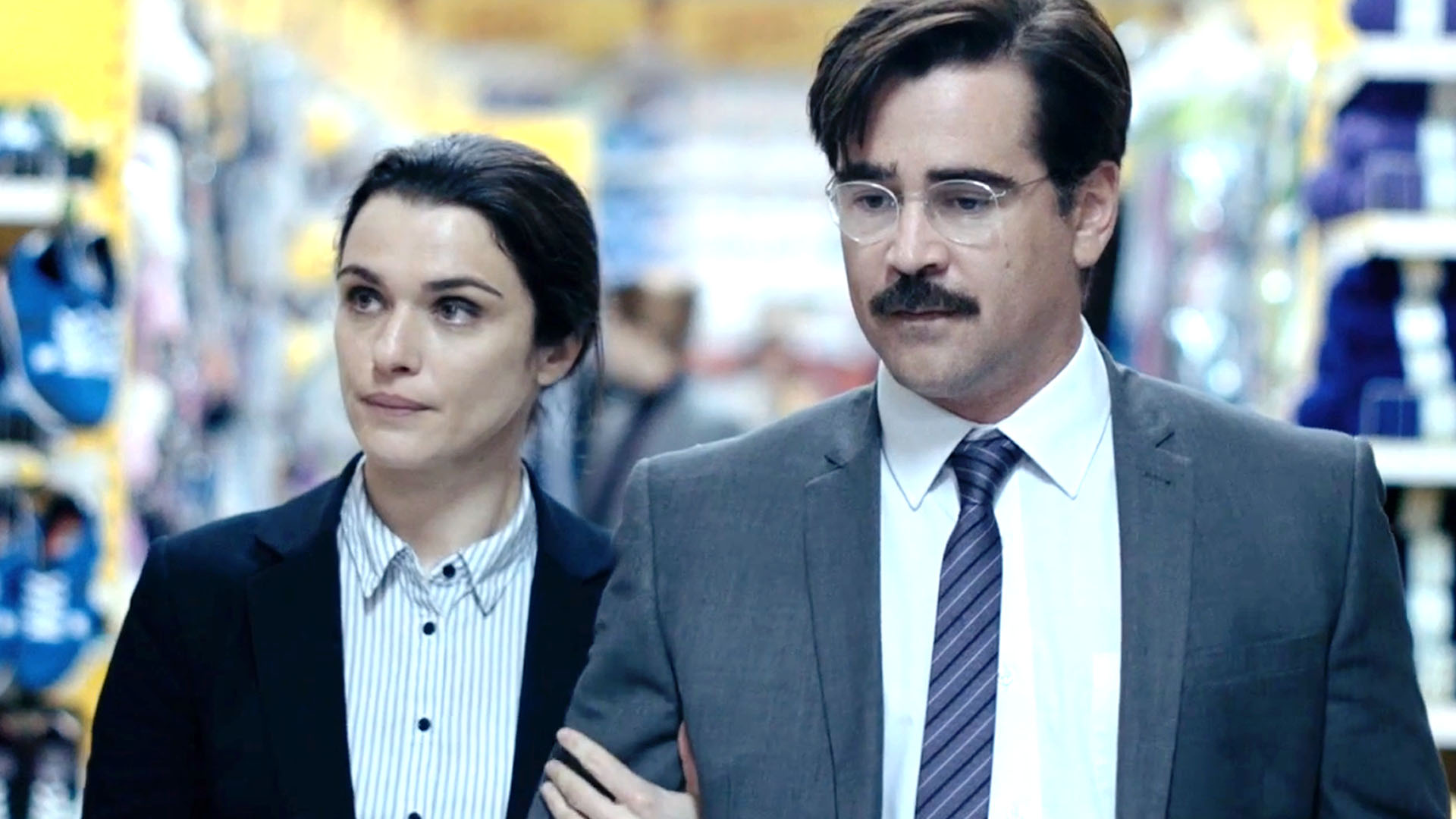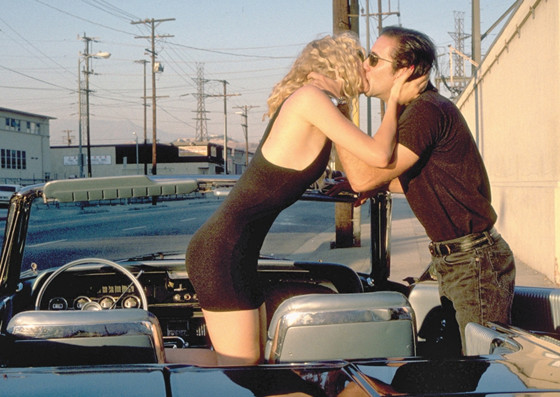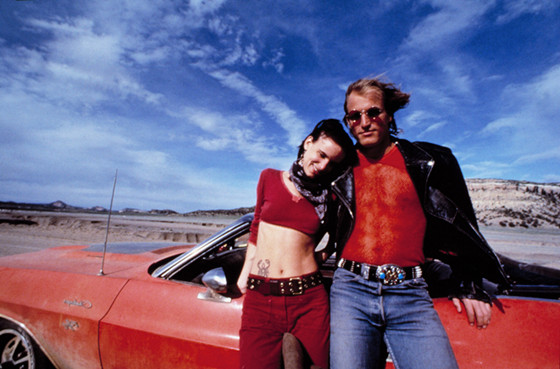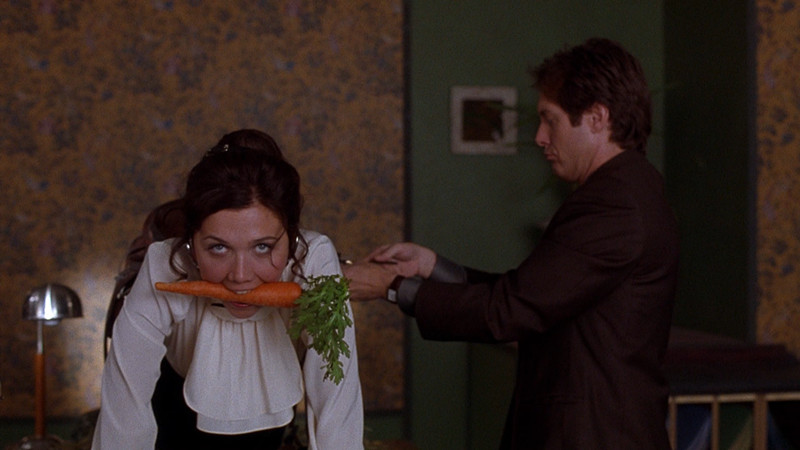
Romance has been part of cinema since the very early days: indeed, “The Kiss” was one of the very first films ever screened for the general public in 1896. From Murnau’s Sunrise to Hawk’s Bringing Up Baby, from Singin’ in the Rain to Moonstruck, romance is one of the few constants through all the tumult and turmoil of the world outside the cinema walls.
However, not all romances end in a musical number and a happy ending. More often than not, the happiness we see displayed on screen is wishful thinking, a perverted version of the reality that we all live.
A world full to bursting with heartbreak, betrayal, misplaced emotions and darkness is the one we try our best to escape from when we buy our movie tickets. But for some filmmakers, these dark subjects are the ones they seek to explore the most, and as the list below demonstrates, they are as varied and diverse as the stories of where we were when we first met our true loves for the first time.
10. 9 1/2 Weeks (Adrian Lyne, 1986)

“How does it feel to be out of control?” Mickey Rourke yells after Kim Basinger as she runs down the streets of Manhattan, and you get the feeling he’s talking about himself as well.
In 9 1/2 Weeks, one of Adrian Lyne’s most erotic (by his standards) films, the desires we keep out of public life are explored and embraced so deeply by its subjects that we know “getting hurt” isn’t something that might happen, it’s an inevitability.
Elizabeth (Basinger), a recently divorced art saleswoman in New York, has a chance encounter with Wall Street arbitrageur John (Rourke) at a bodega. After running into each other again at an open air market, they start seeing each other. There’s not much personal information being shared between them, none of the getting to know you chit chat that most new lovers engage in.
It’s a purely carnal affair, and right from the beginning there’s something a little off about it. John has a controlling side to him, one that Elizabeth plays into, and their relationship leads them down some dark alleyways – both figuratively and literally. In their pursuit of sexual ecstasy, the two lovers plunge deeper down the rabbit hole, toward the darkest parts of their psyches made real, and by the time the film ends, they both know they’ve gone too far.
9. Wild at Heart (David Lynch, 1990)

When people hear the name David Lynch, “romantic” isn’t the word that usually comes to mind. More often than not the surrealist’s films are anything but: violence, sexual sadism and abuse, an at-times overwhelming sense of dread, and dwarves are but a few of the many things one might expect to find in a Lynch film. And yet, with 1990’s Wild at Heart, Lynch did indeed bring his unique imagination to task to deliver what is, unquestionably, a love story.
The plot is simple: Sailor (Nicolas Cage) loves Lula (Laura Dern), Lula loves Sailor. Lula’s mother, on the other hand, hates Sailor and tries to have him killed. Sailor crushes the would-be assassin’s skull and, after getting out of the slammer, he and Lula run off to live a life on the road.
For the most part, the rest of the film details Lula and Sailor traipsing down a yellow brick road of sexual assault, criminality and exploding heads (not to mention countless Wizard of Oz references). But despite its violence and general strangeness, Wild at Heart manages to build its core around the relationship between Cage and Dern.
In spite of the chaos that surrounds them, the two actors – along with a little Elvis – give Lula and Sailor’s love something tangible to hold on to, and they in turn give the film its heart.
8. Natural Born Killers (Oliver Stone, 1994)

The second “young lovers on the lam” film on the list, Oliver Stone’s variation on this theme resulted in 1994’s Natural Born Killers. Written by Quentin Tarantino, the film is a satirical look at the role of the mass media in the role of shaping public opinion, particularly in the case of beloved mass murderers Mickey and Mallory (played by Woody Harrelson and Juliette Lewis).
In a brilliantly unsettling and darkly hilarious sequence, we learn Mallory is being abused by her father (Rodney Dangerfield) through a Leave It To Beaver-style sitcom, complete with an audience that laughs and awws on cue. When Mickey finally arrives, there are whoops and whistles. When Mallory (accompanied by her boyfriend) finally kills her parents, the audience claps. They’re being rewarded for their actions.
And then, by the time they’re finally arrested and put on live television, they’re loved by millions of people all over the country, largely due to the behaviors of the same media (represented by Robert Downey Jr.) that now seeks to condemn their actions. In the years since its initial release, the film has become only more prescient with the rise of reality television and social media. Human beings, on the other hand, remain the same (for better or worse).
In the end, despite the world conspiring to keep them apart and tear them down, Mickey and Mallory win, and freedom is theirs to enjoy. Whether we, as the audience, can do the same is entirely up to us.
7. Leaving Las Vegas (Mike Figgis, 1995)

Sometimes there are no happy endings. The world of Mike Figgis’ Leaving Las Vegas is far removed from the bright lights of the Strip. These characters are not happy-go-lucky tourists looking to make a quick buck or locate their friend after a night of heavy drinking: they are deeply troubled and damaged people looking for some reprieve from the crushing and unforgiving weight of their broken lives.
Ben (Nicolas Cage) is a washed-up movie executive entering the final stages of alcoholism. Having lost his job, family, and friends, he takes his severance check and drives away to Sin City with a simple goal in mind: to drink himself to death.
There, he meets Sera (Elizabeth Shue), a prostitute recently let go by her abusive pimp out of fear that the mobsters he owes money to might hurt her. They begin a relationship, but Ben keeps drinking. Sera doesn’t leave him. They both accept one another for who they are, and remain together all the same, straight on through to the bitter end.
Figgis, though his camera may be unforgiving, has a great deal of empathy for his characters. There is no reprieve for them, no deus ex machina to rescue them at the end of the play, but there is shelter.
Though Ben and Sera are both doomed in their own ways, they are allowed to find a brief mercy from the cruel world outside, and find that rarest of gifts: someone to see them as they are, and love them for it.
6. Secretary (Steven Shainberg, 2002)

We’ve all got our little kinks. How we discover them is, much like the kinks themselves, completely unique to ourselves, and perhaps no movie in the past two decades has taken a more insightful look into the oft-misunderstood world of BDSM better than Secretary.
Following a stay at the hospital after an incident of self-harm, Lee (played by Maggie Gyllenhaal in her breakout role) applies for a secretary position for attorney E. Edward Grey (James Spader). Despite her socially awkward behavior stemming from a dysfunctional family life and her being vastly overqualified for the position, Grey hires her.
Although at first he is annoyed by her mistakes, he finds himself aroused by her submissive behavior, and she is likewise drawn to his dominant personality. They begin a torrid BDSM relationship involving a myriad of different kinks and sexual activities, and Lee finds herself in the midst of a personal and sexual awakening. Grey, on the other hand, begins to experience shame at his sexual proclivities and attempts to rid himself of Lee by firing her after one experience in his office. But Lee has other plans in mind.
Upon its release, the film was praised for its realistic depiction of BDSM. Indeed, when you look at it next to recent films like 50 Shades of Grey, Secretary holds up far better for its realistic depiction of a relationship that, despite all its kinks and fetishes, is ultimately just as healthy as any other.